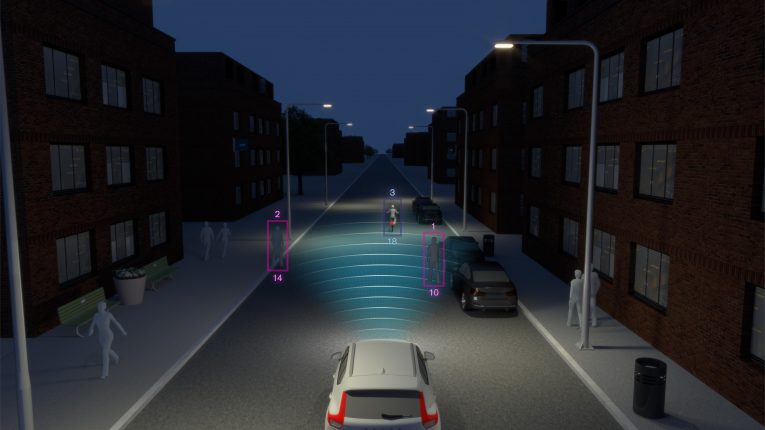
The Impact of Weather Conditions on Crash Avoidance Systems
Crash avoidance systems (CAS), are like smart helpers in your car. They use special sensors and cameras to keep an eye on what’s happening around your vehicle. If they see something dangerous, they either give you a warning or even step in to help you avoid a crash. These CAS systems are becoming more and more common in new cars, and they really help make our roads safer.
But there’s a catch – bad weather can make these CAS systems a bit less reliable. Rain, snow, fog, and when it’s really dark outside, they can make it harder for CAS to see clearly. Plus, if the road is slippery from rain or snow, it can be trickier for CAS to help you control your car.
So, it’s important for drivers to know that CAS might not work as well in bad weather and to be extra careful when it’s not so great outside. We need to take some extra steps to stay safe when Mother Nature isn’t being too kind.
Types of Crash Avoidance Systems
There are different types of crash avoidance systems (CAS), and how well they work can be influenced by the weather.
Automatic emergency braking (AEB), uses radar or cameras to spot vehicles and people in front of your car. If it thinks there’s going to be a crash, it hits the brakes all on its own. AEB is pretty good at stopping rear-end crashes, but when it’s rainy, snowy, or foggy, it might not do as well because the rain and fog can confuse its radar and cameras.
Another type is called forward collision warning (FCW). It’s similar to AEB but only gives you a warning about a possible crash; it doesn’t brake for you. FCW is usually less affected by the weather than AEB, but it can still struggle when it’s dark outside or the road is wet or icy.
Lane departure warning (LDW) is another kind. It watches the lane markings with cameras. If your car starts drifting out of its lane, LDW gives you a heads-up with a sound or a light. But in snowy or icy conditions, when lane markings are hard to see, LDW might not work as well.
Lastly, there’s blind spot monitoring (BSM). This one uses radar to spot other vehicles hiding in your blind spots. If you try to change lanes with a car in your blind spot, BSM warns you with a sound or a light. BSM is usually not too bothered by the weather, but it might struggle in heavy rain or thick fog.
These CAS systems are pretty helpful, but they can get a bit confused when the weather is not great. Keep that in mind when you’re out on the road.
Examples of How Weather Conditions can Impact Crash Avoidance Systems
There have been a number of studies that have examined the impact of weather conditions on CAS performance. One study by the Children’s Hospital of Philadelphia found that AEB systems were less effective in preventing rear-end crashes in wet conditions than in dry conditions with 43% of crashes with AEB were in inclement weather. Another study found that LDW systems were 11% less effective in preventing lane departure crashes in snowy conditions than in dry conditions.
In addition to these studies, there have been a number of real-world cases of CAS failures in bad weather conditions. For example, in 2016, a Tesla Model S crashed into a stopped fire truck in dark conditions. The Tesla’s AEB system failed to detect the fire truck, and the driver was not able to stop the vehicle in time.
Potential consequences of weather-related crash avoidance system failures
The potential consequences of weather-related CAS failures can be severe. As mentioned above, CAS failures can lead to rear-end collisions, lane departure crashes, and other types of accidents. In some cases, these accidents can result in serious injuries or fatalities. According to the lawyers of Nicholson Revell, LLP, a common cause of car accidents is when drivers drive too fast in bad weather conditions and drivers need to drive accordingly when driving in certain weather conditions.
Strategies for mitigating the impact of weather conditions on crash avoidance systems
There are a number of strategies that drivers can use to mitigate the impact of weather conditions on CAS:
- Slow down and leave more space between vehicles. This will give you more time to react to unexpected situations.
- Be more aware of your surroundings. Don’t rely on CAS to do all the work for you.
- Use your headlights in low-light conditions, even during the day. This will make you more visible to other drivers and to CAS sensors.
- Be aware of the limitations of CAS. CAS are not perfect, and they can be less effective in bad weather conditions.
In addition to these strategies, automakers can also take steps to improve the performance of CAS in bad weather. For example, automakers could develop systems that are better able to detect pedestrians and cyclists in low-light or foggy conditions. They could also develop systems that are more resilient to snow and ice.
Crash avoidance systems are an important safety feature in modern vehicles, but it is important to be aware of their limitations in bad weather. Drivers can mitigate the impact of weather conditions on CAS by slowing down, being more aware of their surroundings, and using their headlights. Automakers can also improve the performance of CAS in bad weather by developing systems that are better able to detect pedestrians and cyclists in low-light or foggy conditions, and by developing systems that are more resilient to snow and ice.



